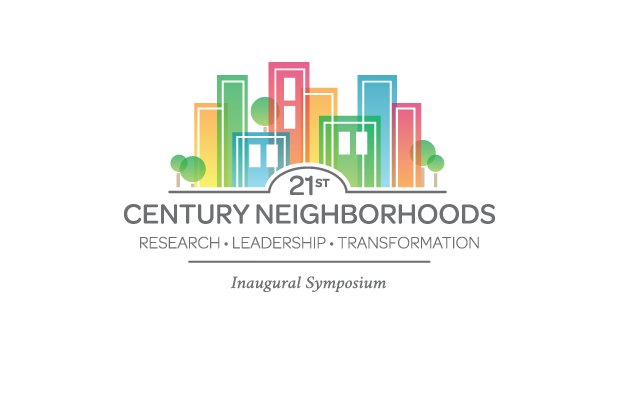Sunlight at the 21st Century Neighborhoods Symposium: How humanizing data will improve our communities

Last week I attended the 21st Century Neighborhoods Symposium in Baltimore, Md., which gathered academics, elected officials, representatives from the non-profit and private sectors and journalists, on how to build great neighborhoods. As part of our involvement with What Works Cities, Sunlight was interested in the role transparency and citizen engagement could play in creating these places.
What we found was that while data and evidence-based decision making is prominent in how cities operate, there is a realization by those in city government and those that work with them of the need to “humanize” data through community engagement and the cross-referencing of data from different parts of government and the public. All of which cannot happen without open access to and easy distribution of data held by governments, along with a concerted effort in reaching out to communities. This humanizing of data allows for solutions to be crafted that are impactful, sustainable and inclusive.
The Symposium provided real-life examples of this. Kasim Reed, the Mayor of Atlanta, told us how his administration approached the redevelopment of the area surrounding Turner Field, which is being vacated by Atlanta Braves. These surrounding neighborhoods are economically depressed. But with the looming exit of the Braves and transit projects such as the Atlanta BeltLine, developers are eagerly seeking build. In an attempt to ensure these communities are beneficiaries of future gains, the city of Atlanta partnered with local community groups and non-profits to survey community needs. This led to efforts to educate the people who lived near Turner Field not sell those homes immediately but encourage them to hold on and participate in the subsequent development. In Atlanta, crowdsourcing became integral to shaping development plans in these communities
Mayor Tony Yarber of Jackson, Miss., provided another example of how data and community engagement shaped his city’s approach to creating good neighborhoods. Using public works data and crime data, the city focused its efforts on targeting code enforcement for blight in areas near schools and in areas of high crime. Here, the data demonstrated showed dilapidated housing, criminal activity and that people are most influenced in where they choose to live by the presence of a school and their safety. So in deciding where to focus their limited resources and get maximum impact, the city made a decision that contributed to less crime, while laying the seeds for future development.
The area where the impact of data, transparency and community engagement was most striking for me was public safety. Police Chief Kenton Buckner, of Little Rock, Ark., noted that being open with police data was essential to foster accountability and trust with the community. “People don’t expect perfect, but they expect the truth”. He specifically mentioned how use of force data should be open, to show that the police take matters seriously.
In a breakout session, experts from various fields noted that crime data did not exist in a vacuum and that it had to be considered with other factors. For example, when addressing gun crimes participants suggested that the same data that identified incident hotspots when combined with other datasets, could also be used to target initiatives that addressed the conditions that lead to criminal activity. So mediation efforts by community groups or job creation efforts could be strategically deployed for immediate and long term gain.
Data and the holistic approach to problem-solving for cities
Instead of simply diagnosing a problem, data combined with input from citizens was used to craft more focused and targeted solutions. Jon Links, Vice Provost and Chief Risk and Compliance Officer at Johns Hopkins University, emphasized in his “call for action”, the need for cities to develop a holistic approach to problem-solving, that addresses factors that lead to crisis, not just the problem itself.
For him, the best method was using data to ask different questions that would lead to more direct solutions. Such data demonstrated that the police who negotiated with protesting groups saw less incidents of violence. With that in mind, community organizations encouraged Baltimore police to negotiate with the local groups who were organizing protests in response to police brutality during the unrest that followed the death of Freddie Gray. After employing this approach, the police saw a reduction in violent incidents in subsequent protests.
The Symposium demonstrated that if cities are going to develop great neighborhoods using data and evidence, they need to include citizens to develop impactful, sustainable and inclusive solutions. We can’t go back to 20th century approaches that deliver 20th century solutions, to paraphrase Jay Willams, former mayor of Youngstown, Ohio and current U.S. Assistant Secretary of Commerce for Economic Development. Transparency through open data and enhanced engagement with communities provide the necessary tools for 21st-century solutions that cities and their citizens are looking for.

